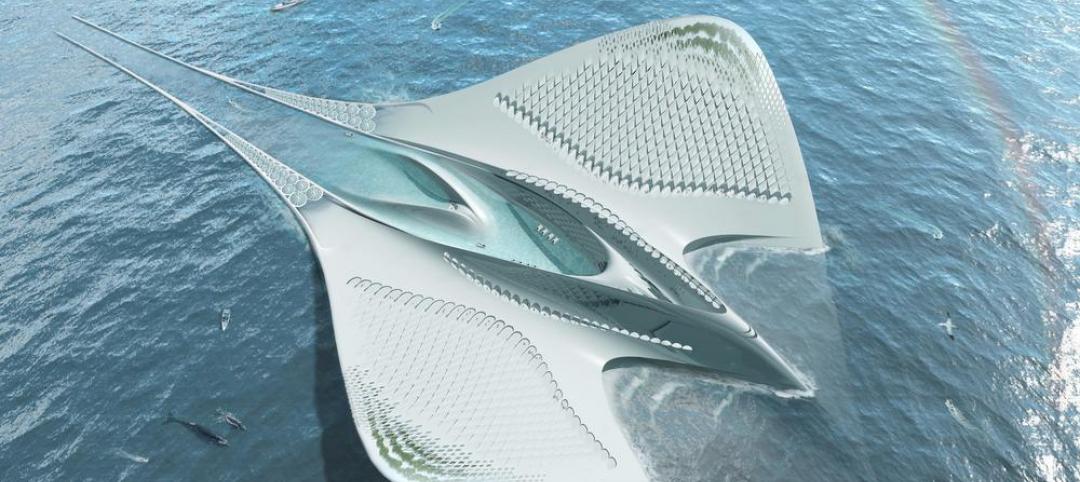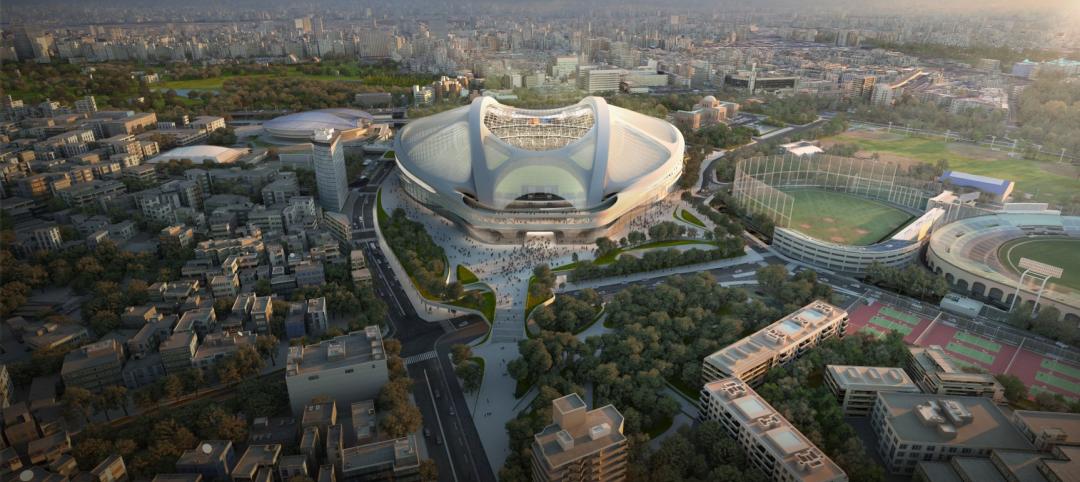Total construction to rise 5.1% in 2011
Spending for U.S. nonresidential building projects plunged nearly 23% in 2010, even as construction spending for heavy/engineering and residential projects dropped less than 2%. Nonresidential’s decline pushed total 2010 construction spending down 10%. The fourth consecutive annual decline brought the level of total construction spending to 30% below the pre-recession peak. Construction spending will be rising from the end of 2010 through 2011 and for several years beyond. The construction recovery comes an unusually long 18 months after recovery began in the overall economy and will be relatively slow.
Total U.S. construction spending will increase 5.1% in 2011. The gain from the end of 2010 to the end of 2011 will be 10%. The biggest annual gain in 2011 will be 10% for new residential construction, far above the 2-3% gains in all other construction sectors.
The delayed and slow construction recovery is due to both the subpar economic recovery and the unique restraints in the construction market, notably the collapse of the highway and housing finance systems (with no replacement in sight for either), a large surplus of residential space, and the weakened financial condition of developers and homebuyers.
Contractors and their suppliers will begin 2011 in a recession-cost environment. Labor is abundant, with annual wage gains still in the 0.0-1.0% range. Credit rates are extremely low but cautious loan approval standards exclude a relatively large share of loan applicants from the capital market. Costs are steady to slightly down for construction materials priced in the U.S. market, such as lumber and concrete, but erratically rising at a 5% or more annual pace for materials priced in international markets, such as metals, plastics, and energy. In order to get work contractors will still set their margins below the bottom of the usual range, and new projects will continue to draw far more than the usual number of bids.
The economic environment for contractors will improve in 2011. But it will continue to worsen early in the year for many types of public work and in the most depressed markets along the southern border and in the Rocky Mountain states. Some improvement will be clearly noticeable by the summer, with that pace accelerating late in the year. Credit rates will be rising but still very low by mid-year. The improved environment will firm materials pricing first before some contractors are able to raise bid prices. By the end of 2011, the materials price inflation trend will be back in the 5-6% annual increase range due to relatively stronger economic growth in the rest of the world as well as the 10% pickup in U.S. construction spending over the previous 12 months.
U.S. GDP growth will move from the 2% pace during most of 2010 to a 2.5-3.0% pace in 2011. This is unusually slow at the mid-point of an economic recovery: 4% or more is typical. Subpar economic growth has a magnified impact on all capital goods industries, including construction. Economic growth will be restrained by the lingering credit problems that began late in 2008 and investor and consumer uncertainty after the massive changes in operating rules made in Washington in the last two years. Note that the details of many of the changes are not yet known, and the results of the November election may revise or rescind some of the changes. Uncertainty always means caution and delayed spending. Beyond 2011, GDP growth will again be above 3.0%, permitting a quickening of the construction recovery.
Construction spending for nonresidential buildings will increase 3.0% in 2011 and 10% from the end of 2010 to the end of 2011. The gain will jump to well over 10% in 2012. For developer-financed projects the turnaround will be dramatic. Spending will rise 2% in 2011 after two years of 30% declines. This market will be expanding at a 15% annual pace by the end of 2011. The steep decline in project starts has already ended. Architects are already reporting rising design activity.
Spending for institutional buildings will rise 4.2% in 2011, mostly for nonprofit and private projects; spending on public buildings will not improve and may slip slightly under pressure from ebbing stimulus funds and cuts in state and local budgets after rainy day funds have been depleted. State taxes began rising in spring 2010 but remain 15% below the pre-recession level.
Housing starts will rise 24% in 2011 but only to about half of the underlying demographic demand trend. Nonetheless, this will generate the usual associated site and utility work as the development of new residential communities resumes, especially in the South and West. Note that new homes will be up to 10% smaller and on smaller lots than in pre-recession developments.
Heavy construction spending, as usually happens, slowed but did not decline while the overall economy was in recession. Then the usual drop in heavy construction activity early in the recovery period was unusually slim because of the massive amount of federal spending in the stimulus plan and a variety of smaller initiatives, such as Build America Bonds. Nominal dollar heavy construction spending is currently about the same as two years ago. Only a 5-6% gain in nominal dollar spending is expected in the next two years but rising project costs will account for more than all of this gain. The price of stimulus funding in 2009-10 is no growth in 2011-12 when federal emergency funding ebbs.
Three heavy sectors will see modest spending gains in 2011 while the remaining three will see no change or small declines. The strongest sectors will be water and sewer (+7.8%), highways and bridges (+6.7%), and communications (+3.7%). The water and sewer gain is due to delayed stimulus funding and the residential market improvement. The highway gain is due to bringing private funds into the market. The weak sectors will be power (-2.8%), conservation (-1.9%), and transportation facilities (+0.2%). Power always declines at this stage of the business cycle.
In spite of sluggish construction activity, domestic manufacturers of construction equipment have increased their sales nearly 60% in the last year. The added sales have been to rebuild rental fleets and supply the relatively strong manufacturing, utility, farming, mining and export markets. Production is still short of capacity so equipment prices are up only 1.1% in the last year. Ahead, the added demand for equipment use on job sites will modestly boost both equipment prices and rental rates by mid-2011. BD+C
Related Stories
Industrial Facilities | Aug 3, 2015
Architect Jacques Rougerie envisions floating city to function as roving laboratory
The manta ray-shaped vessel will be completely self-sustaining, run on marine energy, and produce no waste.
Cultural Facilities | Aug 3, 2015
Funding needed for Washington's Desert Storm memorial
The National Desert Storm Memorial Foundation has a $25 million goal for the project.
Sports and Recreational Facilities | Jul 31, 2015
Zaha Hadid responds to Tokyo Olympic Stadium controversy
“Our warning was not heeded that selecting contractors too early in a heated construction market and without sufficient competition would lead to an overly high estimate of the cost of construction,” said Zaha Hadid in a statement.
Architects | Jul 30, 2015
The Lego Architect: Book offers simple how-to steps for recreating iconic buildings with Legos
The book features famous buildings accompanied with a photograph and drawing of the Lego model of the building, and a list of all the Lego pieces needed to complete a model of the building.
Transit Facilities | Jul 30, 2015
Snøhetta designs ring-shaped cable car station in Italian Alps
In Snøhetta’s design, two cylindrical rings embedded into the existing topography, each at different elevations, will be connected by a cable car. During the minute-long cable car journey, passengers can enjoy views of the city and of the Italian Alps.
Office Buildings | Jul 29, 2015
Design plans for Fannie Mae’s new HQ revealed
The developer/owner, Carr Properties, envisions a 1-million-sf plus mixed-use center with a large retail pavilion.
Sports and Recreational Facilities | Jul 29, 2015
Milwaukee Bucks arena deal approved by Wisconsin state assembly
Created by Milwaukee firm Eppstein Uhen Architects and global firm Populous, the venue will be built in downtown Milwaukee. Its design draws inspiration from both Lake Michigan, which borders Milwaukee, and from aspects of basketball, like high-arcing free throws.
Contractors | Jul 29, 2015
Consensus Construction Forecast: Double-digit growth expected for commercial sector in 2015, 2016
Despite the adverse weather conditions that curtailed design and construction activity in the first quarter of the year, the overall construction market has performed extremely well to date, according to AIA's latest Consensus Construction Forecast.
University Buildings | Jul 28, 2015
OMA designs terraced sports center for UK's Brighton College
Designs for what will be the biggest construction project in the school’s 170-year history feature a rectangular building at the edge of the school’s playing field. A running track is planned for the building’s roof, while sports facilities will be kept underneath.
High-rise Construction | Jul 28, 2015
Work begins on KPF's 'flared silhouette' tower in Manhattan
The 62-story, 157-unit luxury condo tower widens at the 40th floor, resulting in a gently flared silhouette, accented by a sculpted crown.

















